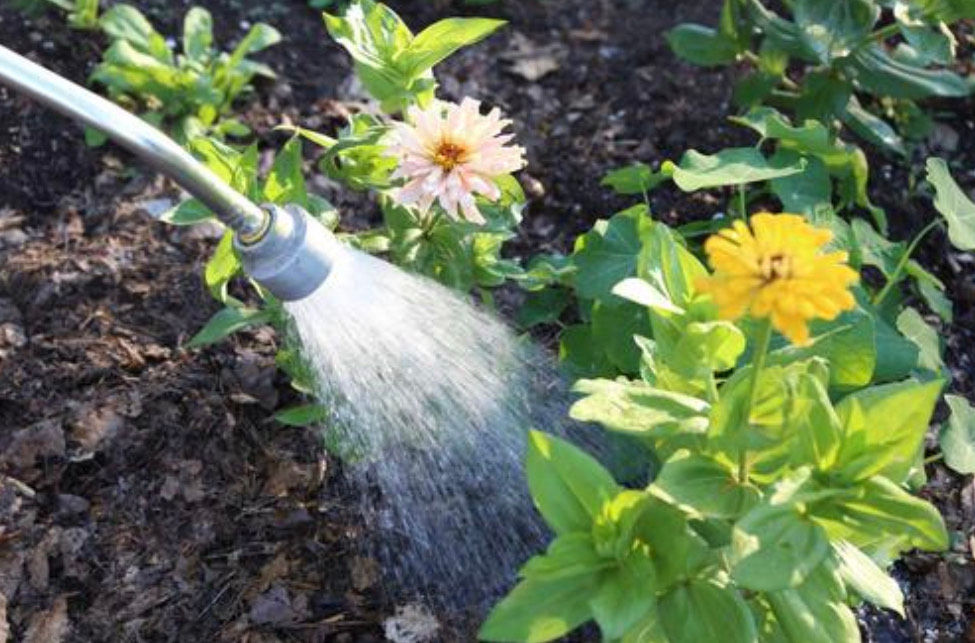Water Wisely
- VISTA Gardens

- Aug 14, 2022
- 3 min read
Updated: Jan 16, 2023

Here are some watering words of wisdom from experienced gardeners.
I have watched our new gardeners for years. Some claim they have a black thumb. People need help understanding what is happening when they water. The first watering usually just pours down and out, leaving none for the plants to take up. To water effectively it is best to water twice. Once the first watering has at least moistened the soil, it will be ready to receive the next water and there will be ample water in the soil for the roots. Water the soil not the plant!
Kitty Wallace, Co-Founder, Coalition for Community Gardens (Tampa Bay)
Better to water a sponge than a stone. Soil with more organic material absorbs more water. Mulch helps keep it in.
Abraham Shakfeh, VISTA gardener and volunteer on the Education Committee
Cover the garden soil with mulch to keep water from evaporating quickly.
Deb Ramos, VISTA Chair of the House of the Rising Seeds
Micro irrigation with a quality timer provides consistent watering which plants love. Just be sure to adjust watering times per needs of the plants, i.e., new plants need more water than mature ones.
Corinna Edwards, VISTA Charter Gardener, Past Chair of Membership Committee
Using microirrigation is an immediate real-world way to practice water conservation and integrated pest management (disease prevention) for growing food by keeping the soil moist and the foliage dry.
We have microirrigation workshops at a cost of $5.00, including a class on microirrigation and a starter kit.
JoAnn Hoffman, Horticulture Program Assistant, Hillsborough County Extension, UF/IFAS
Conserve water! First, check the moisture at the roots using a moisture meter. Then water deeply. Don't water the leaves, water the soil around the root.
Vicki Kuse, Master Gardener of VISTA’s Native Plant Landscape and Monarch Waystation

Frequency of irrigation depends on the age of the crop and your soil type. Young plants need frequent but light irrigation; maturing crops need more water but less often.
Evans Bostick, VISTA Garden Chair, who recommends this additional information.
Water in the morning to reduce the chance of fungal disease.
Ron Conradt, AARP Garden Group Leader
It is so important to keep soil moist but not saturated the first two weeks after transplanting or seeding so that root systems grow deeply into the soil. If the soil dries out around transplants, germinating seeds, and young seedlings, it can negatively affect gardening success. Put your finger in soil to feel how moist it is.
Karen Rose, VISTA Garden Steward
Keep the water low to the ground so that the leaves of your plants remain dry.
Rolfe Evenson, VISTA Compost Co-Chair
Do not overwater your garden beds. Best to check the soil with a water meter. Newly planted seedlings require daily watering, whereas established plants do not need as much water.
Becca Petrilak, VISTA Compost Co-Chair
Plants will actually remove water from the main plant and push it down toward the roots to conserve water during the hottest time of the day. Give the soil a scratch test with your finger to see if it is dry or moist. Soil that is moist underneath the surface does not need to be watered.
David Whitwam, Whitwam Organics
Develop a partnership with one or two VISTA gardeners, so that you have help with watering when needed. Some busy garden neighbors alternate schedules -- one checks and waters both gardens MWF and the other does the same on Tuesdays, Thursdays, and Sundays. (They both like to come to VISTA and work in their respective gardens on Saturday mornings.)
Roberta Owens, Wildflower Garden Chair
Learn about more watering tips and myths here.







Comments